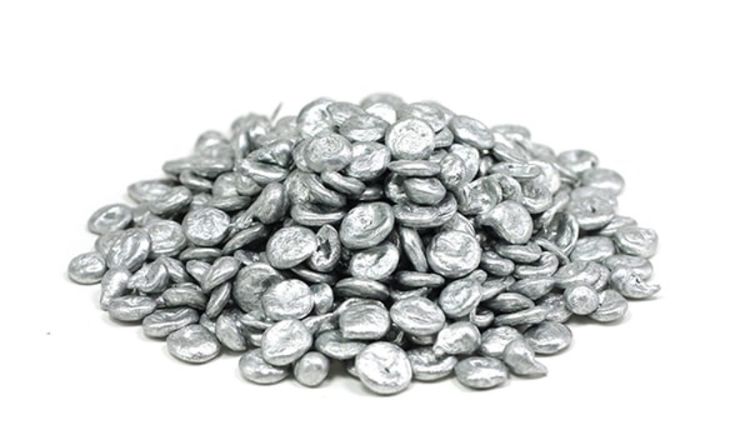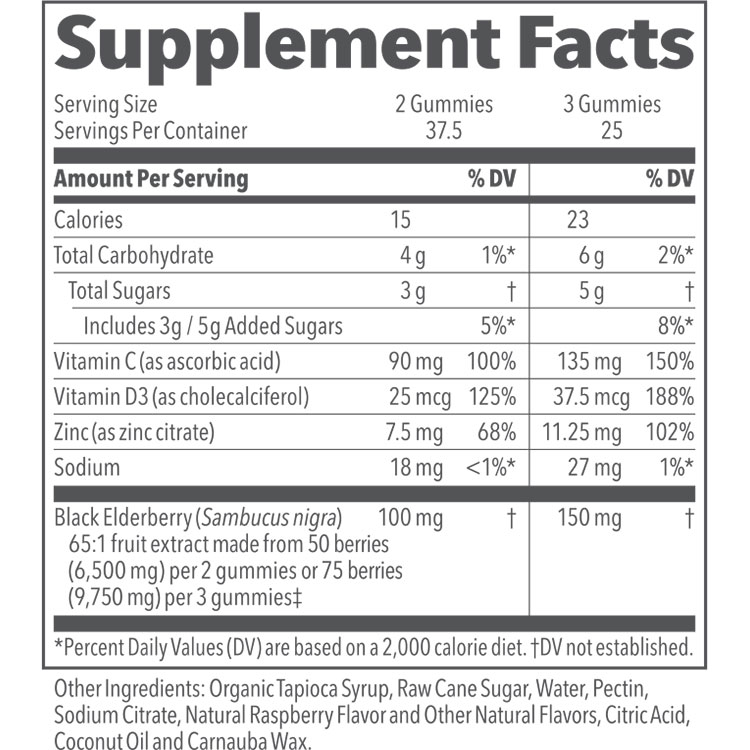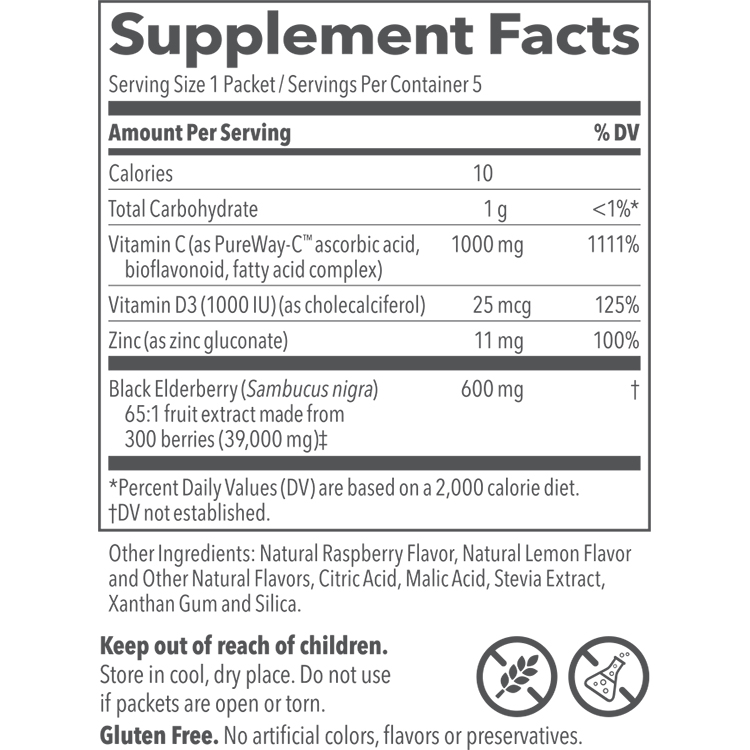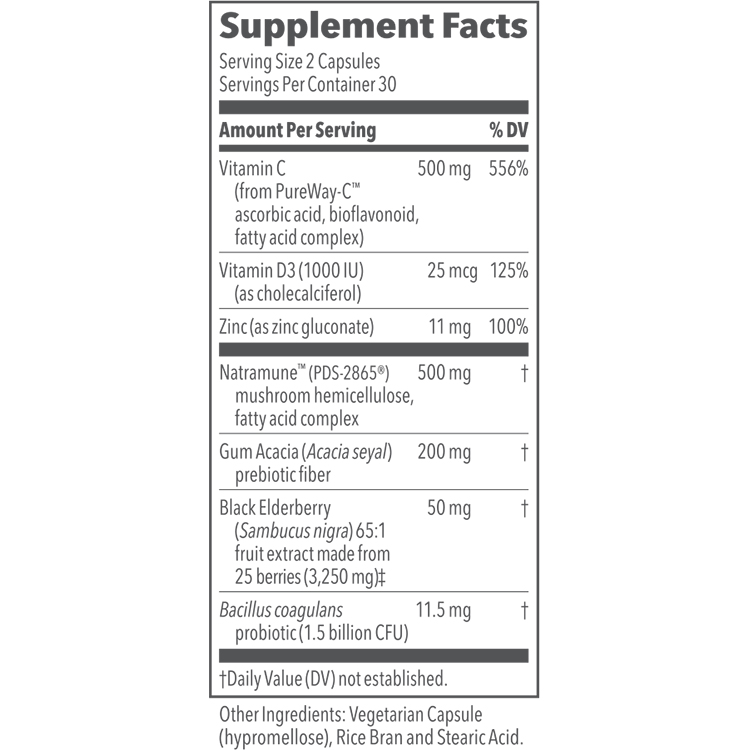BACKGROUND
Ingredient Type: Mineral
Also Known As: Zn, Zinc amino acid chelate, Zinc citrate, Zinc gluconate

Zinc alloys (eg. brass) have been discovered in some of the oldest known civilizations. Among such groups were the Assyrians and Babylonians ca. 3000 BC, the Palestinians ca.1000 BC, as well as during the Roman period when zinc was used as coinage (1). It was used to forge weapons of war, daily tools, and jewelry. Such uses for zinc alloys have been employed over thousands of years of civilization especially in brass and other alloys which are abundantly found in archeological digs, yet zinc was also used historically in medicine as well. Marco Polo found in his travels in the 12th century that the Persians used a zinc oxide compound for inflammation of the eye (2).
Although zinc is an element, included in the transition metals of the periodic table of elements, in nature it only occurs in the form of compounds, bound to other elements. These compounds which were imported from India were considered precious metals to be used in healing and metallurgy. In 1374 in India it was listed as its own entity which can be separate from other metals, though it was not until 1746 that a German chemist was able to isolate zinc (3).
TRADITIONAL USES
Though historical/traditional uses for zinc as a medicine are not well documented, there are nevertheless multiple sources which indicate that it has been used in India for millennia. As noted earlier in this text, Marco Polo in the 11th-century records of a zinc compound used for eye inflammations. There is also an ancient medical text, called “The Charaka Samhita”, which indicate that as early as 500 B.C. it was used for the eyes as well as wound repair. It was used topically, applied directly to the affected area in a salve called “pushpanjan” (4).
WHAT DOES SCIENCE TELL US?
Zinc Treats Zinc Deficiency:
Zinc is known as an essential mineral, vital to human development and sustaining of a healthy life. Zinc is quite versatile, participating in at least 300 enzymatic biochemical reactions (5).
Those who are deficient of this mineral may be afflicted with various ailments because zinc participates in immune function, hormone signaling, wound healing, the sensation of smell and taste, antioxidation, vision, male sexual maturation, and normal growth.
Zinc deficiency can often occur from too little consumption or an inability to absorb zinc in the gut despite adequate consumption. It often arises in children living in the developing world due to a lack of it in the diet. Another avenue to zinc deficiency is an inability to absorb zinc. This situation can be brought about by digestional pathologies such as Crohn’s disease or celiac disease (5), or by a hereditary lack of absorption as seen in acrodermatitis enteropathica (6).
Childhood deficiencies of zinc can be supplemented with zinc, resulting in an increase in numerous enzymatic measures and more importantly growth (p<.05) (7). Due to the difficulty in assessing zinc status most studies of zinc supplementation are applied wholesale to those with growth retardation, regardless of zinc deficiency status. A meta-analysis of 22 double-blinded placebo studies on children from the developing world found that 18 of the 22 of the studies had a positive effect on growth. The mean effect of all the included studies was a moderate increase in relative height compared to placebo +0.22 SD (p<0.0001) (8).
Large studies conducted on those with acrodermatitis enteropathica are few due to its 1/500,000 incidence in the general population; however, one study showed that a defect in immunity cells’ migration to the site of infection was improved in a linear fashion with increasing doses of zinc supplementation (6).
Zinc Might Support Healthy Skin:
In one study of a zinc compound called zinc gluconate, supplementation of 30 mg/day of zinc mineral was given to those with inflammatory acne vs a placebo. It was found that the oral zinc supplement had a statistically significant difference when compared to the placebo (p<0.02). This effect, the study asserted, was likely due to the anti-inflammatory action of zinc (9).
Another study of oral zinc was conducted on 48 subjects with mild to moderate acne. This oral compound of methionine-bound zinc and other antioxidants was given for 12 weeks followed by a 4 weeks treatment-free period. During the 8th week follow up and the 12th week follow up, a statistically significant reduction in the number of facial blemishes was noted. By the end of the study, 79% of the subjects had had an 80-100% improvement of their acne. The study concluded that though the onset of action takes time, there is a clinical and statistically significant improvement of acne with their oral zinc compound (10).
The antiaging properties of zinc have been exhibited in one study which used a copper-zinc malonate-containing cream. Their study was based upon the physiological interactions of copper and zinc in the formation of elastin and collagen fibers, which are thought integral in skin aging and wrinkle development. As skin ages, elastin and collagen are less abundantly produced and are degraded at a higher rate. The protocol for the study was a microscopic view of skin biopsies before and after a 6-week trial of the cream. Upon examination of the skin, increased regeneration of sets of elastin fibers were noted in the 21 participants as well as newly synthesized elastin was in the process of production as evidenced by new, immature strands (11).
Zinc Might Support a Healthy Thyroid:
Hypothyroidism is defined as a state of low thyroid hormone, resulting in such symptoms as low energy, weight gain, facial puffiness, hair loss, skin changes, depression, and cold intolerance. Zinc is known to actively participate in the synthesis of thyroid hormones as well as the cellular sensitivity to those hormones. The production and action of thyroid hormone is dependent upon an adequate supply of zinc in the body; however, the absorption of zinc in the gut is also dependent upon sufficient thyroid hormone. Hence, hypothyroidism may result in a zinc deficiency, furthering the effects of low thyroid (12).
Zinc is listed as an effective supplement in the treatment of hypothyroidism in the guidelines for the treatment of hypothyroidism (13). In one case study of a 28-year-old woman with hypothyroidism, whose symptoms were not completely resolved with administration of synthetic thyroid hormone, a trial of zinc supplementation was undertaken with remarkable improvement. Prior to the zinc supplementation, facial puffiness, scaly skin lesions, hair loss, and depression persisted despite the rise in thyroid levels. After just one month of the supplemental regimen, these symptoms had all improved. Most drastically, the change in facial appearance made the patient unrecognizable. After four months of the regimen, the patient’s hair had completely regrown (12).
Zinc Probably Supports a Healthy Immune System:
For how prevalent the common cold is, our bodies seem to be mal equipped to fight and kill the virus, but this is not due to any defect on our part, as the common cold virus has over 100 different serotypes which infect humans. Once we are immune to one type of the virus another can still infect us by bypassing the most vital part of the immune system — its memory.
A meta-analysis of 7 different studies and 575 participants with naturally acquired common colds showed a statistically reduced duration compared to placebos. On average, the duration was 33% shorter, (95% CI 21% to 45%) when lozenges containing zinc were used. The dosage of five of the studies was between 80 and 92mg/day, while the other two, which used twice the dosage, showed no increased benefit (14). Proposed mechanisms for this finding include direct interference with the viral replication as observed in test tubes, interference with entrance into the cells of the body, helping immune cells fight the virus, and relief of symptoms (14).
Zinc Possibly is Associated with Prostate Health:
As with many other functions of the body, zinc is integral to the enzymes which allow for a healthy prostate. It is present in the enzyme which regulates the balance between testosterone and dihydrotestosterone, maintenance normal prostate function (15). Zinc concentrations in prostate tissue are 10-20-fold that of similar organs and the zinc content of the prostatic fluid is 500-fold that of the blood. Clearly, zinc is vital to the normal functioning of the prostate (16).
Although zinc is required for the normal functioning of the prostate tissue, the jury is still out on whether prostate cancer is influenced by the amount of zinc in the body. Normal prostatic tissue has lots of zinc, cancerous tissue has much less, leading to some misconceptions. This has proven to be muddy waters. One prospective cohort study of 9,000 without prostate cancer had the zinc content in their toenail clippings measured over the course of seven years, along with the development of prostate cancer in those men. 145 new cases of prostate cancer were diagnosed over those seven years, but no link was noted between the zinc content of the clippings and the cancer (15).s
Some research has shown that outside the body prostate cancer cells do not proliferate in the normally increased zinc concentration of the prostate. The cells die and shrink because the proteins normally manufactured to utilize zinc are not present in cancer (16).
Another study was conducted which looked at the supplement consumption of zinc of nearly 47,000 men over 14 years, of which nearly 3,000 developed prostate cancer. No dietary or mild supplement link between zinc and prostate cancer was noted; however, an association was observed at doses greater than 100 mg/day in those who supplemented daily for 10 years or more. In this group, a relative risk of 2.3 was noted. Their conclusion was to avoid mega doses of zinc supplements over extended periods of time. At the same time, one must recognize that there has been contradictory data regarding zinc and prostate cancer (15).
SAFETY
The recommended daily dose of zinc is 10-15 mg/day. In doses less than 40 mg/day, zinc is considered safe for consumption, including those who are pregnant or are breastfeeding (17). Various studies have concluded that increased Zinc doses of 100 to 150 mg/day have been administered to multiple patient groups with minimal side effects (14).
Interactions:
Please consult your doctor if you have any questions or concerns before taking supplemental zinc as it can interact with many medications and or conditions. This is not an exhaustive list.
Major
- Wilson’s disease (hereditary copper overload) is treated with a drug called penicillamine. The drug binds to copper, allowing its excretion from the body. Zinc could reduce the absorption of penicillamine due to its chemical similarity with copper (17,18).
Moderate
- Zinc, along with other cations, binds with antibiotics such as fluoroquinolones, cephalexin, and tetracyclines in the gut, preventing their absorption. Care should be taken to avoid taking the antibiotic and zinc at the same time in the day. It is recommended that zinc be taken at least 1 hour after fluoroquinolones at least 4 hours after tetracyclines, and 3 hours after cephalexin (17,18).
- Cisplatin, a cancer drug often used in the treatment of lung cancer, when taken with zinc can have an increased profile of side effects (17,18).
- Diabetic medication used for type 2 diabetes should be taken with caution with zinc and blood sugars monitored. Both large doses of zinc and diabetic medications decrease blood sugar, which can run dangerously low (17,18).
Side-Effects:
Very large doses of zinc have been shown to cause nausea, vomiting, diarrhea, a metallic taste, and rarely internal organ damage (17). Oral zinc can overwhelm the absorption of copper due to nonspecific absorption of the two metals by similar mechanisms. Therefore, a concomitant administration of copper supplement may be recommended for those taking large doses of zinc for an extended term to prevent anemia (19).
REFERENCES
- The Element Zinc. https://education.jlab.org/itselemental/ele030.html. Accessed April 16, 2019.
- The History of Zinc. https://www.rheinzink.com/en/quality/the-history-of-zinc/. Accessed April 16, 2019.
- Pappas, S. Facts about Zinc. https://www.livescience.com/29378-zinc.html. Accessed April 17, 2019
- Dupree, R. Zinc Oxide: Historical Uses and Modern Benefit. https://www.dermascope.com/resources/7983-zinc-oxide-historical-uses-and-modern-benefits. Accessed April 17, 2019.
- Zinc. University of Michigan. https://www.uofmhealth.org/health-library/hn-2934002. Accessed April 17, 2019.
- Weston WL, Huff JC, Humbert JR, Hambidge KM, Neldner KH, Walravens PA. Zinc Correction of Defective Chemotaxis in Acrodermatitis Enteropathica. Arch Dermatol. 1977;113(4):422–425. doi:10.1001/archderm.1977.01640040030002
- Nakamura, T., Nishiyama, S., Futagoishi-Suginohara, Y., Matsuda, I., & Higashi, A. (1993). Mild to moderate zinc deficiency in short children: Effect of zinc supplementation on linear growth velocity. The Journal of Pediatrics, 123(1), 65-69. doi:10.1016/s0022-3476(05)81538-0
- Walter, P., & Sandstroem, B. Role of trace elements for health promotion and disease prevention. Basel: Karger. 1998.
- Dreno B, Amblard P, Agache P, Sirot S, Litoux P. Low doses of zinc gluconate for inflammatory acne. Acta Derm Venereol. 1989;69(6):541-3
- Sardana K, Garg VK. An observational study of methionine-bound zinc with antioxidants for mild to moderate acne vulgaris. Dermatol Ther. 2010;23(4):411-8. doi: 10.1111/j.1529-8019.2010.01342.x.
- Mahoney MG, Brennan D, Starcher B, Faryniarz J, Ramirez J, Parr L, Uitto J. Extracellular matrix in cutaneous ageing: the effects of 0.1% copper-zinc malonate-containing cream on elastin biosynthesis. Exp Dermatol. 2009 Mar;18(3):205-11. doi: 10.1111/j.1600-0625.2008.00783.x.
- Binitha, M., Sarita, S., & Betsy, A. (2013). Zinc deficiency associated with hypothyroidism: An overlooked cause of severe alopecia. International Journal of Trichology, 5(1), 40. doi:10.4103/0974-7753.114714
- Jonklaas J, Bianco AC, Bauer AJ, et al. Guidelines for the treatment of hypothyroidism: prepared by the american thyroid association task force on thyroid hormone replacement. Thyroid. 2014;24(12):1670–1751. doi:10.1089/thy.2014.0028
- Hemilä, H. (2017). Zinc lozenges and the common cold: A meta-analysis comparing zinc acetate and zinc gluconate, and the role of zinc dosage. JRSM Open, 8(5), 205427041769429. doi:10.1177/2054270417694291
- Zinc and Prostate Cancer. Harvard Health. https://www.health.harvard.edu/newsletter_article/Zinc_and_prostate_cancer. Accessed April 18, 2019
- Costello, L.C., & Franklin, R.B. A comprehensive review of the role of zinc in normal prostate function and metabolism; and its implications in prostate cancer. Archives of Biochemistry and Biophysics,611, 100-112. doi:10.1016/j.abb.2016.04.014
- Zinc. Rxlist. https://www.rxlist.com/zinc/supplements.htm#Interactions. Accessed April 17, 2019.
- Zinc. WebMD. https://www.webmd.com/vitamins/ai/ingredientmono-982/zinc. Accessed April 17, 2019.
- Maret, W., & Sandstead, H. H. (2006). Zinc requirements and the risks and benefits of zinc supplementation. Journal of Trace Elements in Medicine and Biology,20(1), 3-18. doi:10.1016/j.jtemb.2006.01.006




